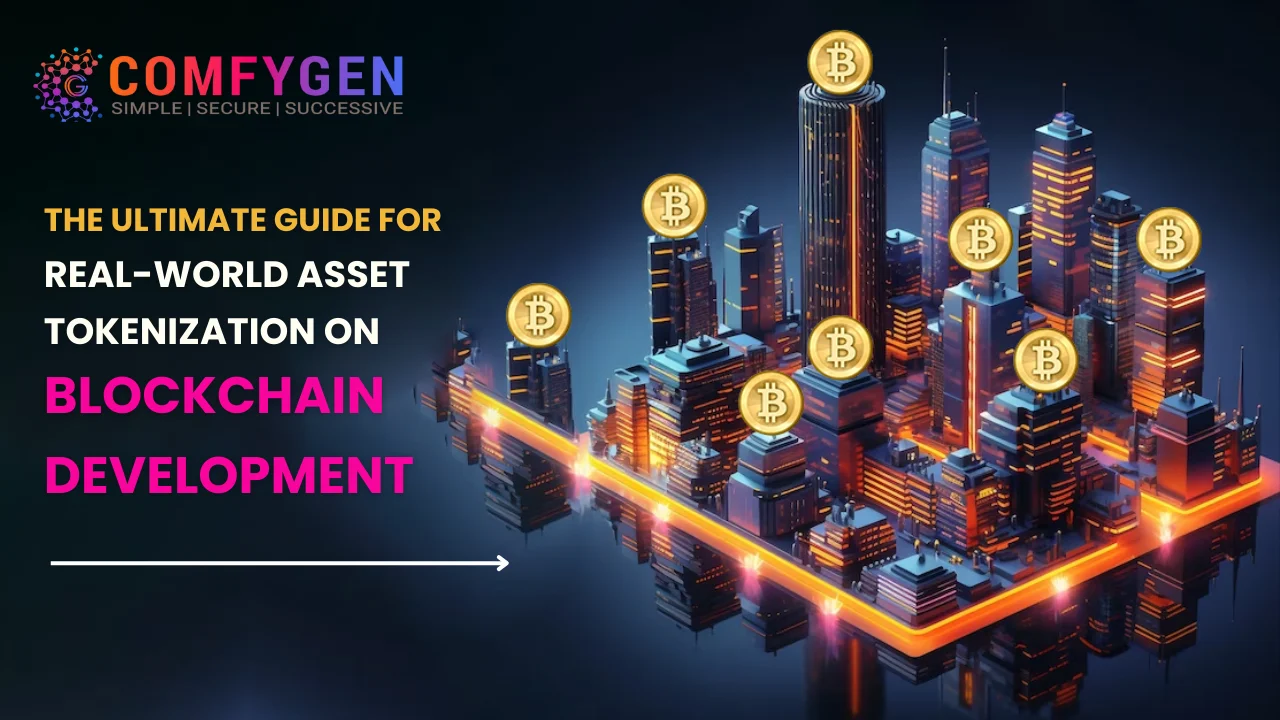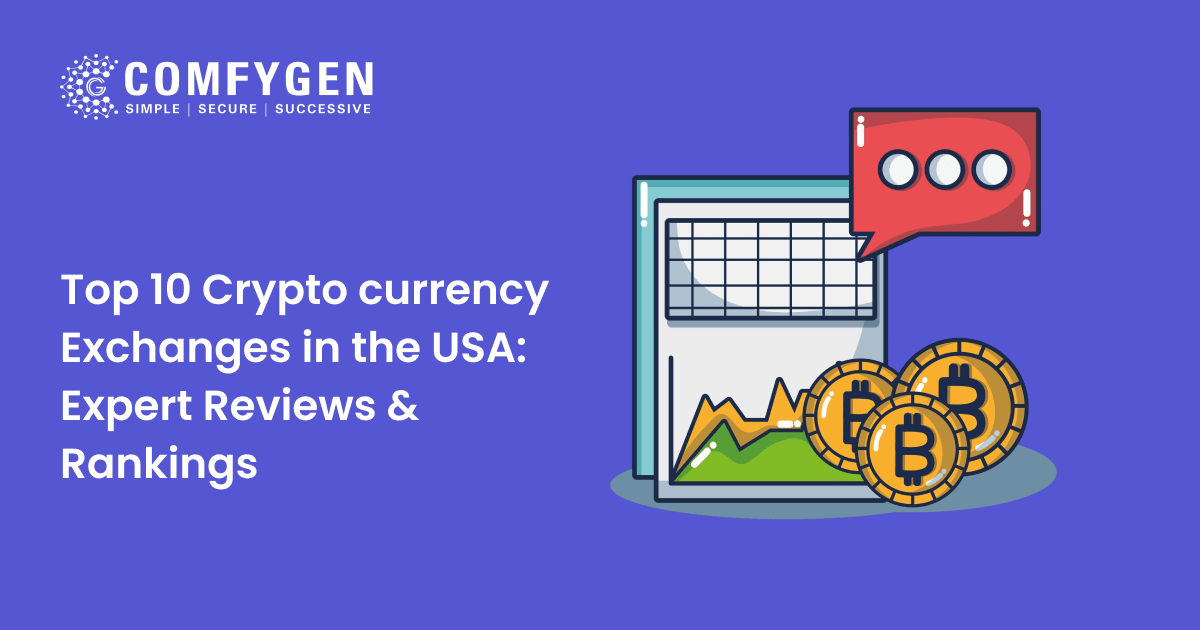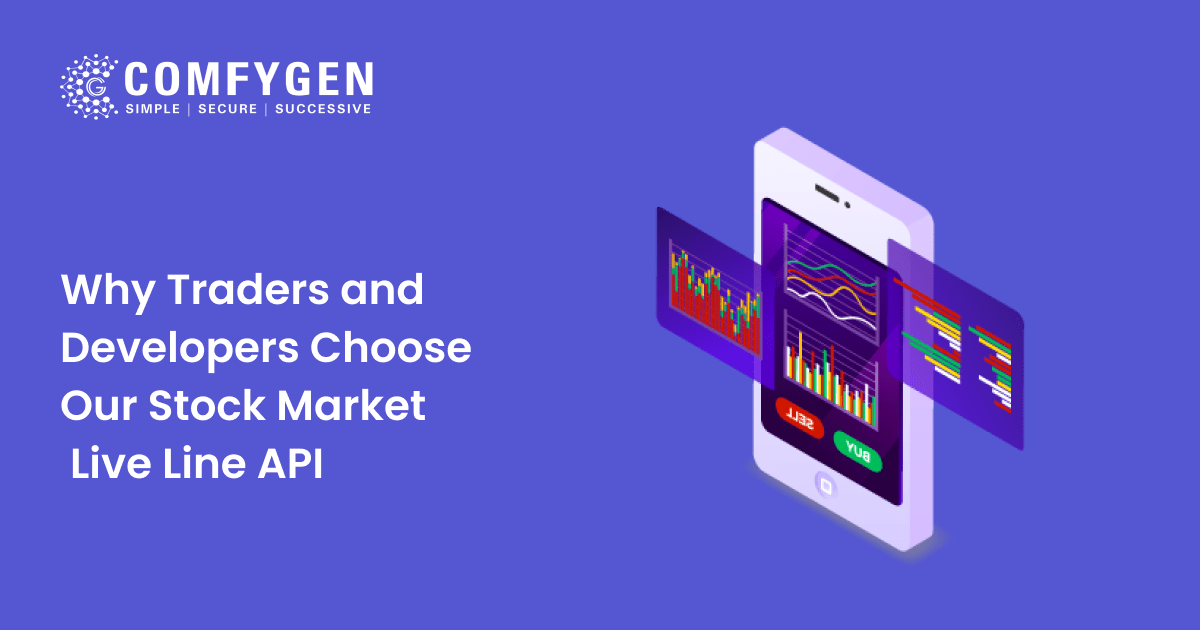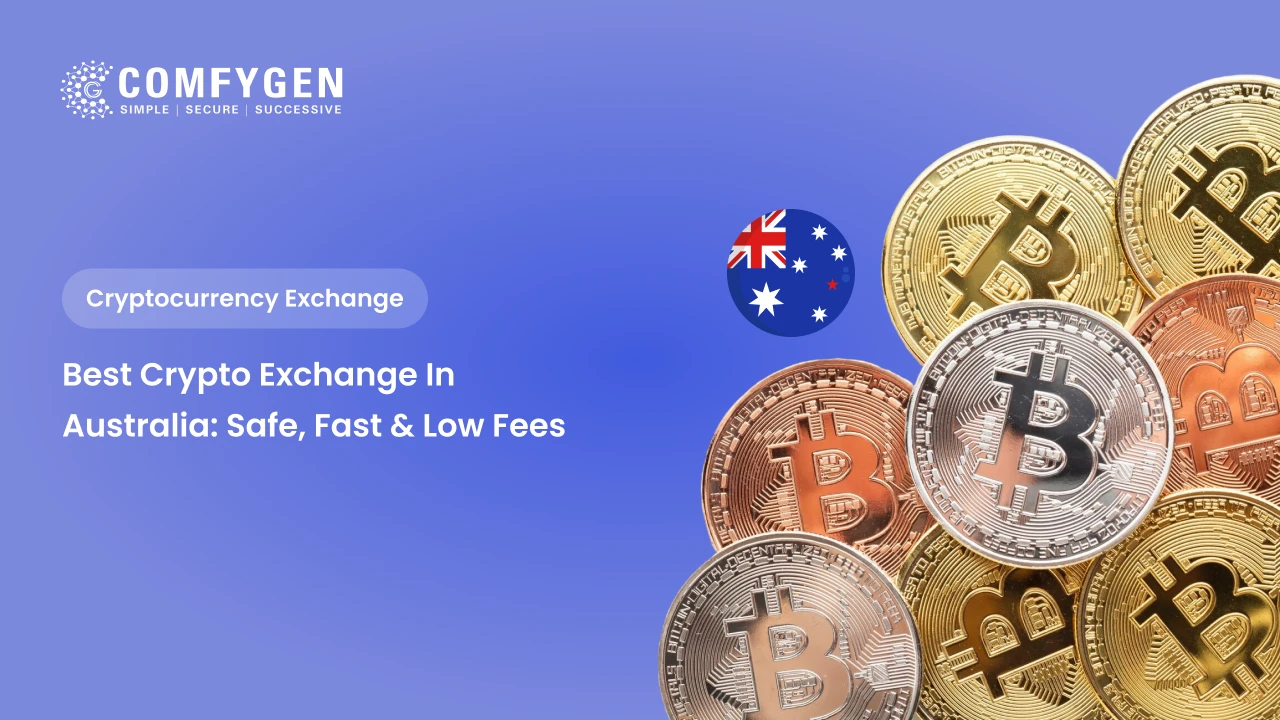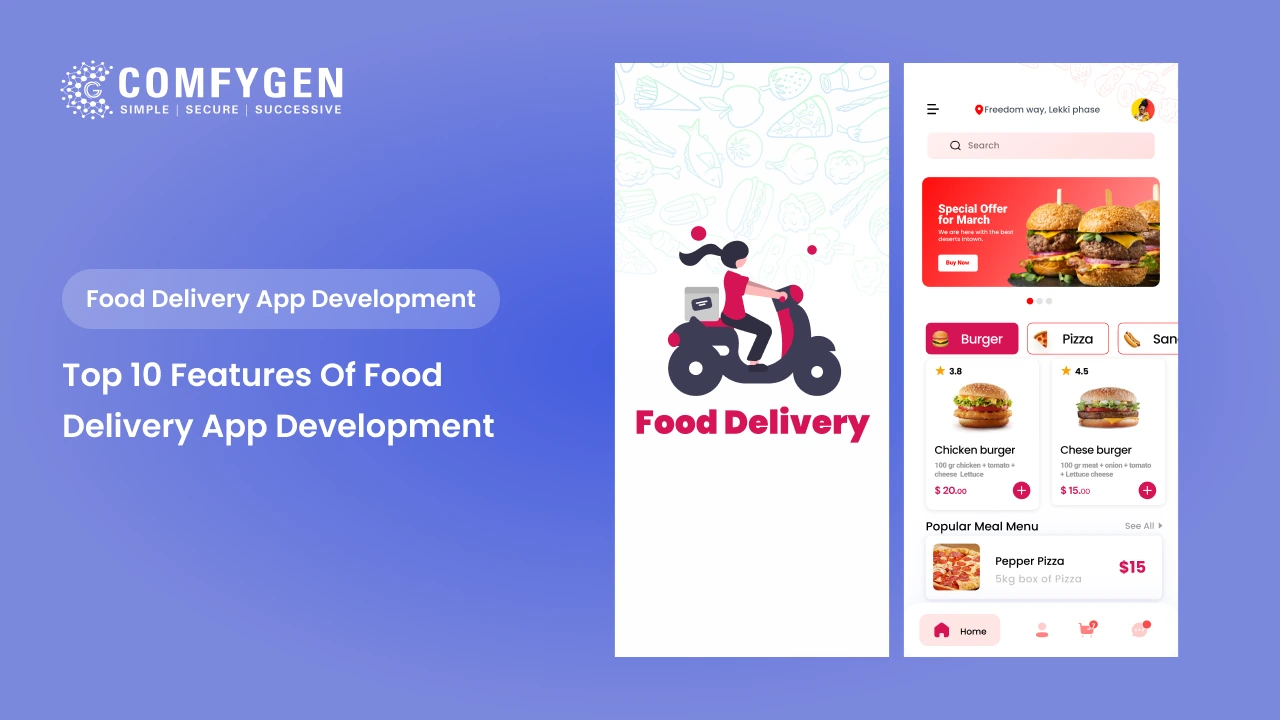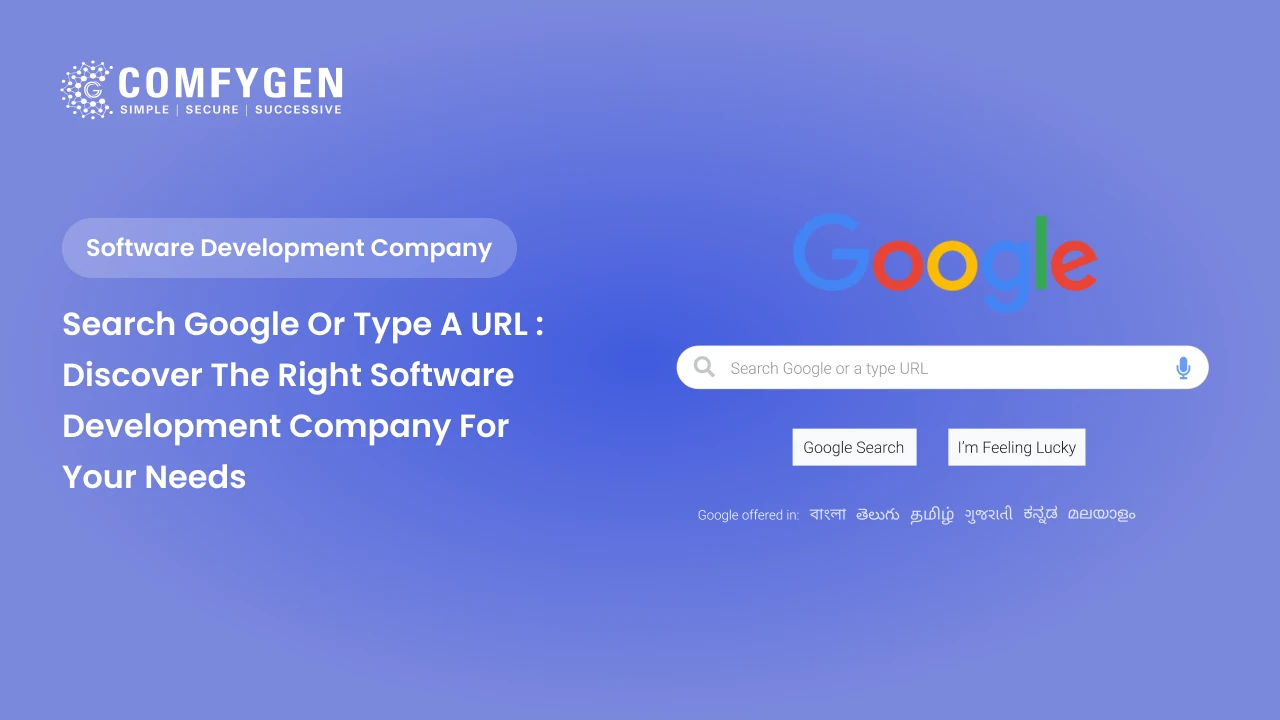The Ultimate Guide for Real-World Asset Tokenization on Blockchain Development
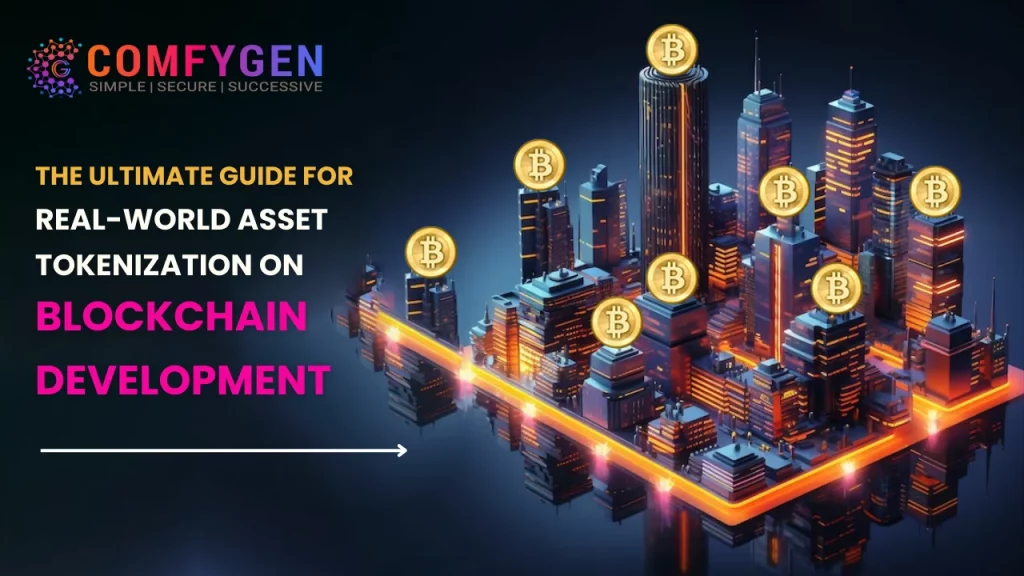
Real-world asset tokenization in blockchain development revolutionizes traditional finance by converting physical assets into digital tokens. This comprehensive guide navigates the complexities, emphasizing key steps. Begin with asset evaluation, ensuring legal compliance, and determining tokenization viability. Choose a suitable blockchain platform, considering factors like scalability and consensus mechanisms. Smart contracts play a central role in meticulously coding them to represent ownership and automate transactions. Security is paramount, employing strong encryption and authentication measures. Regulatory acceptance is important to understand jurisdiction-specific rules. Implement a user-friendly interface for seamless token management. Lastly, strategize marketing and liquidity to enhance token value and market adoption, ensuring a successful real-world asset tokenization venture.
The aim of this article “The Ultimate Guide for Real-World Asset Tokenization on Blockchain Development – blog” is to provide a comprehensive and authoritative resource that navigates readers through the intricate landscape of asset tokenization. This complete guide shows the conceptual, blockchain development technology, and practical aspects of token development real-world assets on the blockchain development company. It aims to empower readers with a profound understanding of the tokenization blockchain development process, real-world asset token development in the blockchain development company, and the myriad benefits and challenges associated with this transformative financial practice. By offering in-depth insights and actionable blockchain development knowledge, the guide aims to serve as an indispensable reference for individuals, businesses, and blockchain developers venturing into the dynamic asset token development field.
Introduction to Real World Asset Tokenization
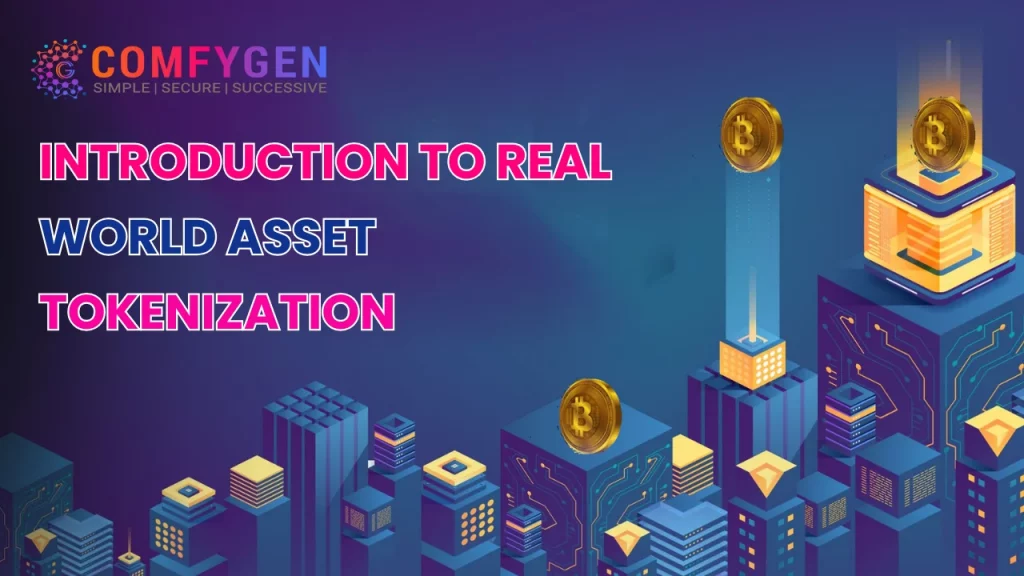
Real-world asset tokenization marks a paradigm shift in finance, converting tangible assets into blockchain-based crypto tokens. This innovative process enhances liquidity, accessibility, and transparency. By representing physical assets as digital crypto tokens on blockchain development, it enables fractional ownership, unlocking new investment opportunities. This introduction sets the stage for a transformative journey, exploring the intricacies and benefits of bridging the physical and digital fields through asset tokenization.
The Concept of Asset Tokenization
Asset tokenization is a groundbreaking financial concept reshaping traditional ownership structures. It involves converting real-world assets ranging from real estate and art to commodities into digital crypto tokens on blockchain development. The asset tokenization process facilitates fractional ownership, breaking down asset value into tradable, divisible units. By leveraging blockchain’s security and transparency, tokenization mitigates barriers to entry, allowing a broader investor base to participate in traditionally illiquid markets. The concept democratizes investing, offering smaller investors a stake in high-value assets. Furthermore, it enhances liquidity by enabling seamless and faster transactions. Asset tokenization not only transforms the financial landscape but also introduces a new era of inclusivity, efficiency, and accessibility in the world of investments.
Evolution of Asset Tokenization in the Blockchain Industry
The evolution of asset tokenization in the blockchain development company reflects a transformative journey from conceptual inception to widespread adoption. Initially emerging as a novel idea, it gained momentum as blockchain technology matured. The shift was spurred by a growing recognition of the potential to democratize finance, making traditionally exclusive assets accessible to a broader audience. regulatory frameworks evolved, providing a clearer path for compliance, blockchain development companies witnessed increased confidence and investment. smart contracts integration further streamlined the tokenization process, enhancing security and programmability. Today, asset tokenization stands as a testament to blockchain’s capacity to revolutionize finance, offering a more inclusive, efficient, and transparent approach to asset ownership and investment. The journey continues, with ongoing innovations shaping the future landscape of tokenized assets.
Understanding Asset Tokenization Blockchain Technology
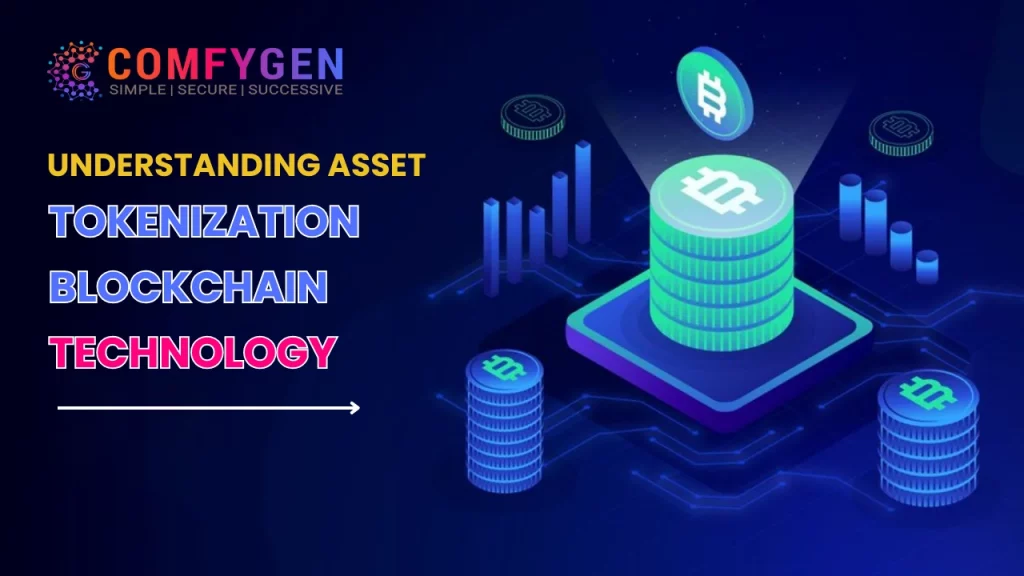
Asset tokenization leverages blockchain technology to redefine ownership and investment. By representing real-world assets as digital tokens on a decentralized and secure ledger, blockchain ensures transparency, immutability, and accessibility. Smart contracts play a central role, automating processes like dividend distribution and ensuring compliance. This symbiotic integration of asset tokenization and blockchain technology not only revolutionizes financial markets but also democratizes access, making fractional ownership and trading of assets more efficient and inclusive.
Brief Overview of Blockchain Technology
Blockchain development is a decentralized and distributed ledger system that securely records and verifies transactions across blockchain network of computers. blockchain works on a consensus mechanism, ensuring agreement on the validity of many transaction without the need for a central authority. Blocks of data are cryptographically linked, forming an unchangeable blockchain. This immutability enhances security, while decentralization prevents single points of failure. Smart contracts, self-executing code on the blockchain, automate processes. Blockchain’s transparency and honest nature make it a foundational blockchain technology for various mobile applications beyond cryptocurrencies, including asset tokenization, providing a trustworthy and efficient blockchain platform for digital transactions and ownership.
Smart Contracts and Their Role in Asset Tokenization
Smart contracts are self-executing agreements with programming language code terms residing on a blockchain development. In asset tokenization, smart contracts play a central role, automating blockchain development processes related to ownership, transactions, and compliance. Through predefined rules written in code, smart contracts ensure transparent and trustless execution, eliminating the need for intermediaries. smart contracts facilitate fractional ownership by automatically managing the issuance, transfer, and redemption of tokenized assets. This programmable functionality not only streamlines administrative tasks but also enhances security, reducing the risk of fraud. Smart contracts are the backbone of asset tokenization, embedding efficiency, transparency, and reliability into the blockchain development process of digitizing real-world assets.
The Digital Transformation
The digital transformation triggered by asset tokenization revolutionizes traditional finance and helps in a new era of efficiency and accessibility. The blockchain development process involves converting physical assets into digital crypto tokens on a blockchain, enabling seamless transactions and fractional ownership. It eliminates geographical barriers, allowing global participation in previously restricted markets. Moreover, the transparency and security implicit in blockchain technology bolster trust. digital transformation not only accelerates transaction speed but also reduces costs associated with intermediaries. By bridging the physical and digital fields, asset tokenization marks a paradigm shift, democratizing finance and the way for a more inclusive and blockchain technology-advanced financial landscape.
Tokenization on the Blockchain
Tokenization on the blockchain is the process of converting real-world assets into digital tokens, each representing a share or portion of the underlying asset. crypto tokens are then securely recorded on a decentralized ledger using blockchain technology. This method unlocks liquidity by allowing fractional ownership and facilitates borderless and 24/7 trading. Blockchain development ensures transparency, immutability, and security, while smart contracts automate the execution of predefined rules. Tokenization extends beyond cryptocurrencies, transforming assets like real estate and art into easily tradable digital assets. It not only enhances market accessibility but also introduces a more efficient, transparent, and inclusive way of managing and trading assets.
Benefits of Tokenizing Real-World Assets
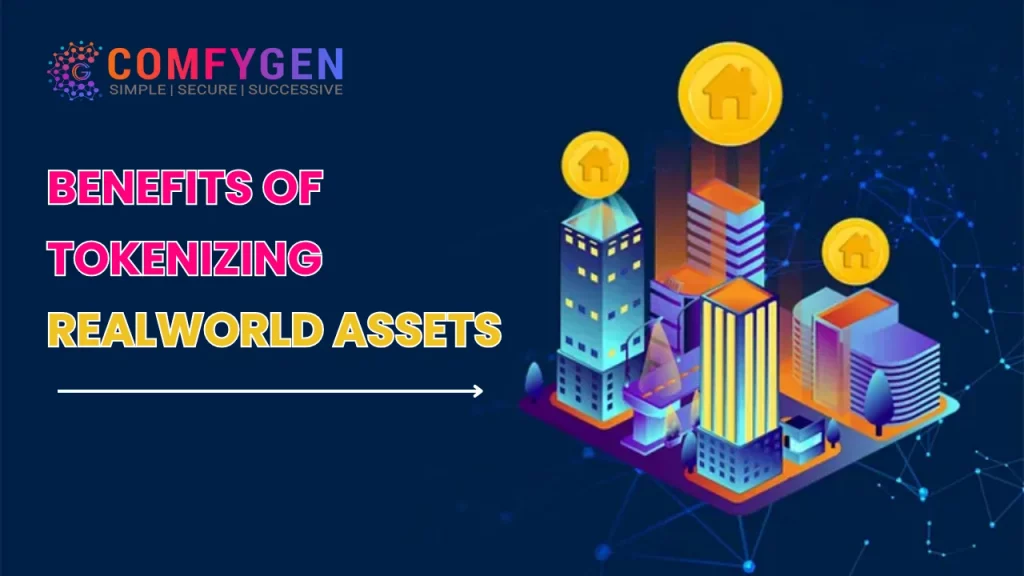
Tokenizing real-world assets offers multifaceted benefits. It enhances liquidity by enabling fractional ownership, making high-value assets accessible to a broader investor base. blockchain development process reduces traditional barriers, like high entry costs. blockchain transparency ensures trust and smart contracts automate processes, reducing administrative overhead. The 24/7 traceability of tokenized assets and the elimination of intermediaries further streamline transactions. asset tokenization brings efficiency, accessibility, and democratization to the world of finance, revolutionizing how we perceive and interact with tangible assets.
Increased Liquidity through Tokenization
Tokenization significantly increases liquidity by transforming real-world assets into digital crypto tokens. Through fractional ownership, investors can buy and sell smaller portions of high-value assets, democratizing access to traditionally illiquid markets. This increased liquidity stems from the ability to trade crypto tokens 24/7 on blockchain platforms, reducing the time and effort required for traditional transactions. As a result, asset tokenization not only spreads investment blockchain development opportunities but also enhances market efficiency, making it a transformative force in the financial landscape.
Fractional Ownership and Accessibility
Fractional ownership and increased accessibility are central advantages of asset tokenization. Breaking down real-world assets into digital crypto tokens allows investors to buy and own a fraction of high-value assets, lowering entry barriers. This democratizes investment opportunities, enabling a broader audience to participate in markets traditionally limited to a select few. Fractional ownership not only fosters financial inclusivity but also enhances liquidity, as these digital fractions can be easily traded on blockchain platforms, reshaping the landscape of ownership and investment.
Transparency and Security in Asset Tokenization
Transparency and security form the bedrock of asset tokenization. Blockchain’s immutable and decentralized nature ensures transparent and tamper-resistant records of ownership and transactions. Blockchain participants can verify asset details in real-time, fostering trust in the system. smart contracts automate blockchain development processes, reducing the risk of fraud and ensuring acceptance of predefined rules. This combination of transparency and security not only mitigates the potential for disputes but also instills confidence in investors, making asset tokenization a reliable and trustworthy mechanism for representing and trading real-world assets.
Accessibility to Global Investors and Market Expansion
Asset tokenization opens doors to global investors, breaking down geographical barriers and expanding market reach. Through blockchain technology, investors from around the world gain access to diverse assets traditionally confined to specific regions. This global accessibility not only fosters a more inclusive investment landscape but also injects liquidity into markets previously limited by local constraints. The 24/7 availability for trading on blockchain platforms further enhances this accessibility, creating a borderless and dynamic environment that transcends traditional limitations, marking a significant shift in the paradigm of global investments.
Reduction of Intermediaries and Costs in Asset Transactions
Asset tokenization streamlines transactions by decreasing the belief in intermediaries and reducing associated costs. Through smart contracts on blockchain development, automated blockchain development processes eliminate the need for multiple intermediaries, like brokers and clearinghouses. This direct peer-to-peer interaction enhances efficiency, accelerates transaction speed, and lowers transactional costs. By cutting out unnecessary layers, asset tokenization not only simplifies the investment blockchain development process but also makes it more cost-effective, paving the way for a more streamlined and economically efficient financial ecosystem.
Improved Security
Asset tokenization enhances security through the utilization of blockchain technology. The decentralized and immutable nature of blockchain ensures that once recorded, ownership and transaction details cannot be changed or manipulated. This tamper-resistant quality, combined with cryptographic safeguards, fortifies the asset tokenization integrity process. With reduced reliance on centralized databases, the risk of fraud is minimized, instilling confidence in participants. Improved security is a fundamental advantage, reinforcing the reliability of asset tokenization as a secure and trustworthy method for managing and trading real-world assets.
Efficiency and Reduced Costs
Asset tokenization drives efficiency and cost reduction by automating blockchain development processes and cutting out intermediaries. Blockchain’s smart contracts streamline transactions, automating tasks like ownership transfers and dividend distributions. This automation not only accelerates processes but also minimizes the risk of errors. by eliminating the need for multiple intermediaries in traditional transactions, like brokers and custodians, asset tokenization significantly reduces associated costs. This double impact of increased efficiency and reduced costs positions tokenization as a transformative force in the financial landscape.
Increased Transparency
Asset tokenization introduces heightened transparency by leveraging blockchain technology. The decentralized and publicly accessible ledger ensures that all transactions and ownership details are visible and verifiable by participants in real-time. This transparency reduce the risk of fraud and supports trust among investors. Every step of the asset lifecycle, from issuance to trading, is recorded immutably on the blockchain development, providing a comprehensive and transparent view. Increased transparency not only enhances accountability but also contributes to the credibility of asset tokenization in the eyes of market participants and regulators alike.
24/7 Market Access
Asset tokenization grants 24/7 market access, transcending the limitations of traditional financial markets. Unlike conventional cryptocurrency exchanges with fixed operating hours, blockchain development platforms enable continuous crypto trading. This around-the-clock accessibility accommodates global investors in different time zones, fostering a more dynamic and inclusive market. Participants can buy, sell, and manage their tokenized assets at any time, enhancing market liquidity and responsiveness. The 24/7 market access not only aligns with the global nature of modern finance but also contributes to the efficiency and attractiveness of tokenized assets.
Enhanced Portfolio Diversification
Asset tokenization facilitates enhanced portfolio diversification, empowering investors to spread their holdings across a broader range of assets. Through fractional ownership, individuals can invest in high-value assets that were once financially out of reach, reducing risk by diversifying across different asset classes. This strategy helps mitigate the impact of market volatility on a portfolio. Tokenized assets, spanning real estate to art, offer a novel avenue for diversification, enabling investors to build more resilient and well-balanced investment portfolios in the evolving landscape of modern finance.
Regulatory Compliance
Ensuring regulatory compliance is a paramount aspect of asset tokenization. Blockchain’s transparency facilitates acceptance to regulatory frameworks, providing a clear audit trail of transactions and ownership. Smart contracts can embed compliance rules, automating regulatory processes. This proactive approach not only minimizes the risk of legal issues but also fosters trust among regulators and participants. Navigating jurisdiction-specific regulations is important, and tokenization blockchain platforms must prioritize compliance to build a sustainable and legally sound ecosystem for the issuance and trading of tokenized assets.
Easier Inheritance and Estate Planning
Asset tokenization simplifies heritage and estate planning through its digitized and programmable nature. Smart contracts can be designed to automate the seamless transfer of tokenized assets to assign in compliance with predetermined rules. This reduces the complexities associated with traditional inheritance processes, making it more efficient and transparent. By encoding specific instructions into smart contracts, individuals can ensure a smoother transition of their tokenized assets to beneficiaries, adding a layer of automation and clarity to the often intricate landscape of inheritance and estate planning.
Types of Real-World Assets Suitable for Tokenization
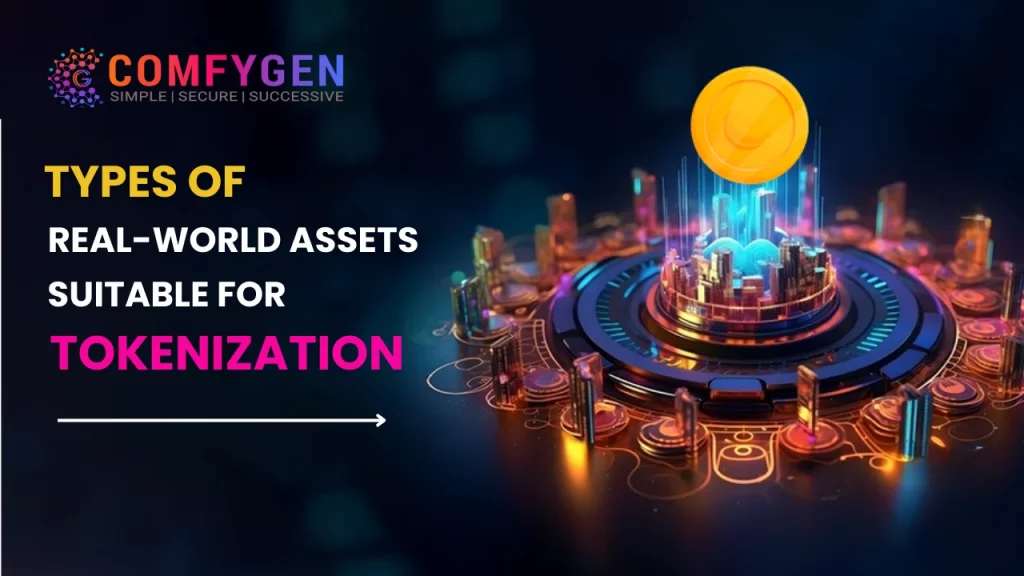
Real-world assets suitable for tokenization span diverse categories. Real estate tokenization enables fractional ownership, while art and collectibles tokenization democratizes the art market. Commodities tokenization streamlines trading, and intellectual property tokenization opens doors for creators and investors. Securities and equities tokenization digitizes traditional financial instruments, fostering accessibility and efficiency in the evolving landscape of asset ownership.
Tokenization of Real Estate Assets
Real estate tokenization has emerged as a transformative force in the property market. By converting physical real estate assets into digital crypto tokens on a blockchain development, it addresses historical challenges like illiquidity and high entry barriers. Fractional ownership allows investors to purchase and trade small portions of properties, opening up real estate investments to a broader audience. Blockchain ensures transparency in property transactions and ownership records, reducing the risk of fraud. Smart contracts automate processes like rental income distribution, making real estate tokenization an efficient and accessible avenue for both investors and property owners.
Tokenization of Art and Collectibles
Tokenization has revolutionized the art and collectibles market by breaking down high-value assets into digital crypto tokens. vintage cars, and other collectibles can be represented as tradable crypto tokens on a blockchain development. This enables fractional ownership, making it feasible for multiple investors to own a piece of valuable art. Tokenization enhances liquidity in this traditionally illiquid market, as these digital crypto tokens can be traded more easily than physical assets. It also introduces transparency, providing a verifiable and immutable record of ownership. Art and collectibles tokenization democratizes access to the world of fine arts, fostering a more inclusive and dynamic art investment landscape.
Commodities Tokenization
Tokenizing goods like precious metals, oil, or agricultural products brings efficiency to traditional commodity trading. Blockchain facilitates digital crypto token development representing ownership in these commodities. Investors can buy and sell crypto tokens, gaining exposure to goods markets without the need to physically handle the assets. This process reduces transaction costs, enhances liquidity, and opens up commodity markets to a broader range of investors. Smart contracts can automate processes like dividend payments, streamlining commodity investment and providing a seamless experience for market participants.
Intellectual Property Tokenization
Intellectual property including patents, trademarks, and copyrights, can be tokenized to unlock new opportunities for creators and investors. Tokenization allows IP owners to represent their rights as digital crypto tokens on a blockchain development company. Investors can then purchase crypto tokens, gaining a share of the intellectual property’s potential revenue streams. This democratizes access to intellectual property investments, enabling smaller investors to participate in the innovation economy. Smart contracts can automate royalty distributions, ensuring a transparent and efficient way to monetize intellectual assets.
Securities and Equities Tokenization
Tokenizing traditional securities and equities digitizes ownership and trading blockchain development processes. Stocks, bonds, and other financial instruments can be represented as digital crypto tokens on a blockchain development company. This innovation introduces fractional ownership, making it easier for investors to diversify their portfolios. Blockchain’s transparency ensures accurate and tamper-resistant records of ownership, reducing the risk of fraud. Securities and equities tokenization also streamlines the settlement blockchain development process, reducing the time and costs associated with traditional financial transactions. This approach transforms the landscape of traditional financial markets, making them more accessible, efficient, and inclusive.
Legal and Regulatory Considerations in Real-World Asset Tokenization
Compliance with security laws is important in real-world asset tokenization, ensuring acceptance of securities regulations. Navigating jurisdictional regulations is important for cross-border transactions, requiring a comprehensive understanding of international laws. Investor protection measures and alignment with legal frameworks for smart contracts are imperative, fostering transparency and trust in the tokenization process.
Compliance with Security Laws and Regulations
Ensuring compliance with security laws and regulations is a cornerstone of real-world asset tokenization. The issuance and trading of tokenized assets often fall within the purview of securities regulations. It is compulsory to meticulously accept to these laws to avoid legal reaction. This involves thorough due diligence to determine whether the tokenized asset qualifies as a security, requiring registration with relevant regulatory bodies. Transparency in disclosing information to investors is key, aligning with securities laws to provide a clear and comprehensive picture of the investment.
Jurisdictional Regulations and Cross-Border Considerations
Navigating jurisdictional regulations is important in the complex landscape of asset tokenization. Different countries have varying legal blockchain development frameworks, and compliance with local regulations is paramount. Cross-border transactions introduce additional layers of complexity, necessitating a comprehensive understanding of international laws. Legal teams must work collaboratively to address jurisdiction-specific challenges, ensuring that the tokenization process adheres to the regulatory requirements of all involved regions. A proactive approach to compliance fosters a secure and legally sound environment for cross-border asset tokenization.
Investor Protection and Regulatory Compliance
Safeguarding investor interests is a fundamental aspect of real-world asset tokenization. Stringent regulatory compliance not only protects investors but also builds trust in the tokenization ecosystem. Implementing strong investor protection measures involves clear and transparent communication, ensuring that investors are well informed about the risks and benefits of tokenized assets. Compliance with disclosure requirements and investor accreditation standards helps uphold regulatory standards and fosters confidence in the integrity of the asset tokenization process.
Smart Contract and Legal Frameworks for Asset Tokenization
The integration of smart contracts into asset tokenization requires a meticulous approach to legal frameworks. Smart contracts are self-executing and programmable, automating key processes in the tokenization lifecycle. Legal professionals must ensure that these contracts align with existing legal frameworks and regulatory requirements. This involves defining the rights and obligations of token holders, establishing dispute resolution mechanisms, and incorporating compliance measures within the code. A harmonious integration of smart contracts with legal frameworks not only ensures regulatory acceptance but also streamlines the execution of asset tokenization processes.
Technical Aspects of Asset Tokenization on Blockchain
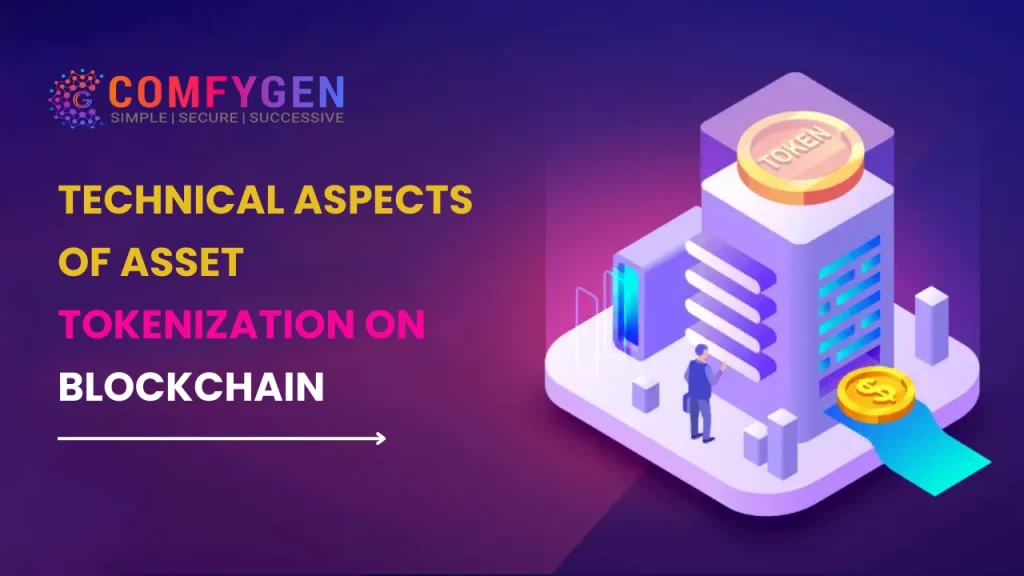
Ethereum’s ERC-20 Token Development Company and ERC-721 Token Development Company standards, integral to asset tokenization, define fungible and non-fungible tokens respectively. Tokenization platforms like Polymath guide users through the process, ensuring compliance. Interoperability allows seamless interaction across blockchain development companies, while scalability addresses the network’s capacity for growing transactions, important for global asset tokenization.
Ethereum ERC-20 Token Development Company and ERC-721 Standards for Tokenization
Ethereum’s ERC-20 Token Development Company and ERC-721 Token Development Company standards are foundational to asset tokenization. ERC-20 Token Development Company defines a fungible token standard, widely used for representing fractional ownership and facilitating seamless trading. ERC-721 Token Development Company, on the other hand, establishes a non-fungible token development standard, ideal for unique assets like real estate or art. These standards ensure compatibility with a myriad of decentralized applications and crypto wallet development, providing a strong foundation for blockchain developers to tokenize diverse assets on the Ethereum blockchain development company.
Tokenization Platforms and Protocols
Various tokenization blockchain platforms and protocols facilitate the creation and management of tokenized assets. Platforms like Polymath and Securitize offer end-to-end solutions, guiding users through the tokenization process, compliance, and issuance. Protocols like Security Token Offering blockchain development frameworks provide a standardized approach to security token creation. Choosing the right blockchain platform or protocol depends on factors like the type of asset, regulatory requirements, and desired features, emphasizing the need for careful consideration in the selection blockchain development process.
Interoperability and Scalability of Token Assets
Interoperability and scalability are critical technical considerations in token assets. Interoperability ensures that tokens can seamlessly interact across different blockchain development networks, fostering a more interconnected ecosystem. Solutions like cross-chain bridges enhance interoperability. Scalability addresses the ability of the blockchain to handle a growing number of transactions, important for widespread adoption. Blockchain Layer-2 solutions, sidechains, and advancements like Ethereum 2.0 aim to address scalability concerns, providing the necessary infrastructure for the efficient tokenization and trading of assets on a global scale. These technical aspects collectively shape the effectiveness and versatility of asset tokenization on blockchain networks.
Tokenization Process and Implementation
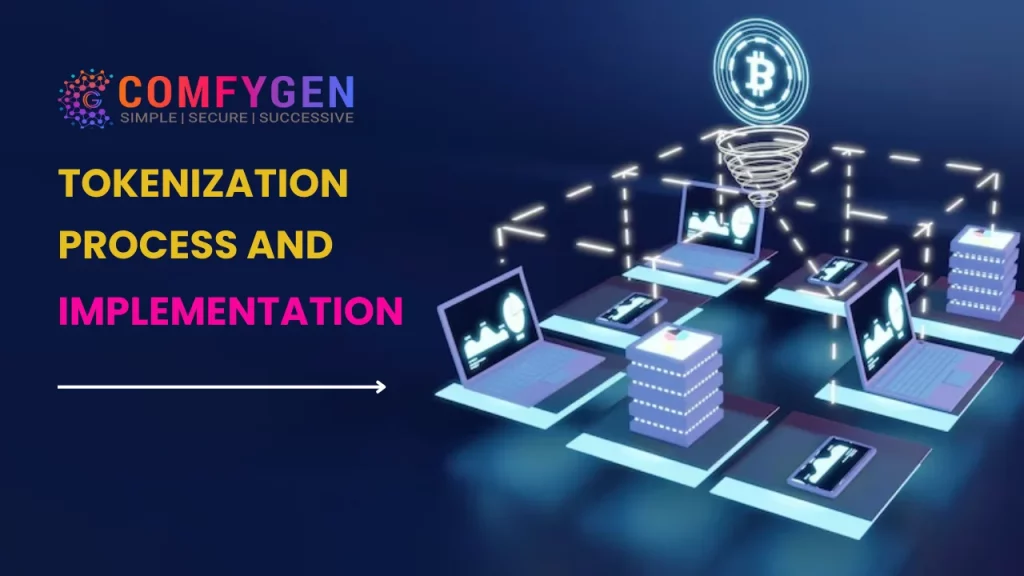
The tokenization process starts with digital token development on a blockchain development company, using standards like ERC-20 token development or Ethereum token development. Tokens shows fractional ownership of real-world assets. Smart contracts automate asset management, including dividend distribution and ownership transfers. Asset backing insures the tokens are tied to tangible assets, and redemption processes allow change back to the underlying assets, providing liquidity. This systematic implementation insures transparency, efficiency, and compliance in the token development journey.
Token Creation and Distribution
The token development process starts from a central step real-world assets are represented digitally on a blockchain. Using established standards like Ethereum’s ERC-20 token development or Solana token development developers encode the asset’s features into a smart contract defining parameters like divisibility and ownership rules. Once the smart contract is deployed then tokens are produced like tron token development, Solana token development, Ethereum token development crypto token development, and ERC-20 token development. corresponding to the fractional ownership of the underlying asset, token allocation involves investors or stakeholders. This can be through methods like Security Token Offerings or Initial Coin Offerings, accepting to regulatory requirements for transparency and investor protection.
Tokenized Asset Management and Governance
Tokenized assets are critical for Effective management and governance continuous value and working capacity. Smart contracts play a central role asset management, including dividend distribution, voting rights, and ownership transfers in automating various aspects. Governance frameworks, often embedded in smart contracts, define that how take decisions related to the asset are made. This could involve voting on major changes, upgrades, or correction to the asset’s features. Decentralized self-govern Organizations are emerging as governance structures who’s allowing token holders to collectively participate in decision-making, fostering a democratic and transparent approach to managing tokenized assets.
Asset Backing and Redemption Processes
Tokenized assets are often backed by the underlying real-world assets to ensure value and trust. The asset backing process involves securing and verifying the physical or digital assets that the tokens represent. Regular audits and reports may be conducted to validate the asset’s existence and value, ensuring transparency for token holders. This ensures liquidity and flexibility for investors while maintaining the integrity of the tokenized asset.
How Real World Asset Tokenization Works?
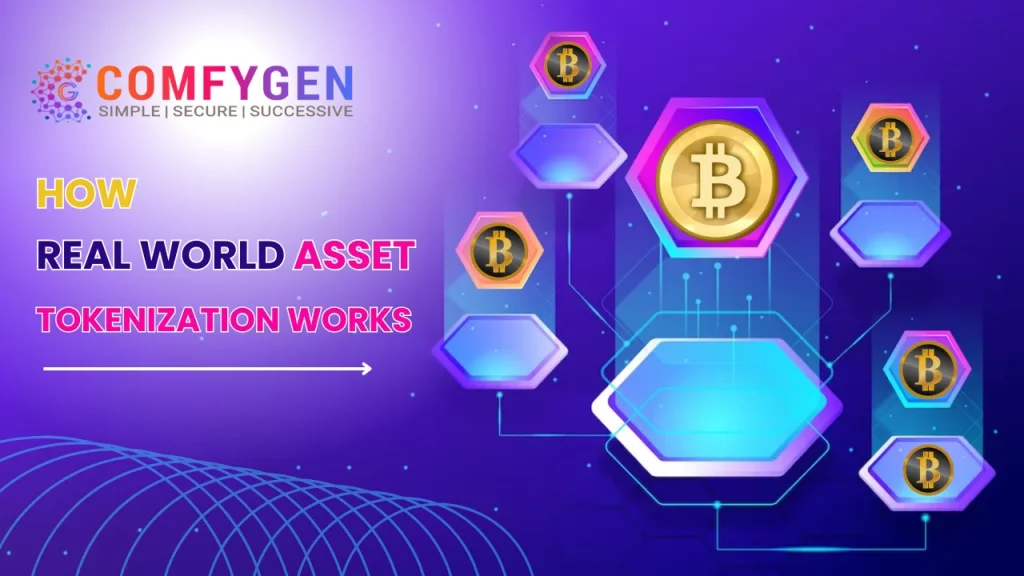
Real-world asset tokenization involves converting tangible assets, like real estate, art, or commodities, into digital tokens on a blockchain. The process typically follows these steps: First, a smart contract is created, defining ownership rules and asset characteristics. Digital tokens are then minted, representing fractional ownership of the underlying asset. These tokens are distributed to investors, often through regulated offerings. The blockchain ensures transparency, immutability, and security of ownership records. Smart contracts automate asset management, enabling functions like dividend distribution. Asset backing verifies the existence and value of the underlying assets, and redemption processes provide liquidity by allowing token holders to convert their digital assets back into the tangible ones they represent.
Challenges and Risks in Asset Tokenization
Asset tokenization faces challenges in security and custody, with potential vulnerabilities in smart contracts and the need for strong custodianship. Market volatility and illiquidity risks, akin to traditional markets, pose concerns for tokenized assets. Operational and technological challenges, like smart contract weakness and regulatory uncertainties, require ongoing vigilance. Addressing these issues through advanced security measures, liquidity initiatives, and adaptive strategies is important for the sustainable growth of asset tokenization.
Security and Custody Concerns
Security and custody are high-priority challenges in asset tokenization. Despite the implict security blockchain features, weakness still exist. Hacking threats, smart contract weakness, and potential infraction pose risks to the digital assets. Custodianship of the physical assets backing the tokens is important for maintaining their value. Ensuring strong security measures, like multi-signature crypto wallets and secure smart contracts, is imperative. Collaborating with reputable custodians enhances the overall security infrastructure, mitigating the risks associated with unauthorized access and safeguarding both digital and physical assets.
Market Volatility and Illiquidity Risks
Market volatility and illiquidity present substantial risks in asset token development. Tokenized assets, influenced by market forces can experience price fluctuations similar to traditional assets. However, the relative novelty and evolving nature of tokenized markets may exacerbate volatility. Illiquidity concerns arise when the crypto trading volume of tokenized assets is insufficient, hindering swift transactions. To address this, fostering liquidity through regulated exchanges and market-making initiatives is compulsory.
Operational and Technological Risks in Asset Tokenization
Operational and technological challenges can impede the seamless implementation of asset tokenization. Smart contract weakness, coding errors, and the need for ongoing upgrades expose tokenized assets to operational risks. Ensuring the resilience of the underlying blockchain infrastructure is critical for long-term success. Scalability issues may arise as transaction volumes increase, impacting the efficiency of tokenized markets. Regulatory uncertainties and evolving compliance requirements further contribute to operational challenges. Addressing these risks involves continuous monitoring, strong auditing processes, and staying abreast of technological advancements to adapt to the evolving landscape of asset tokenization.
Future Trends and Innovations in Asset Tokenization
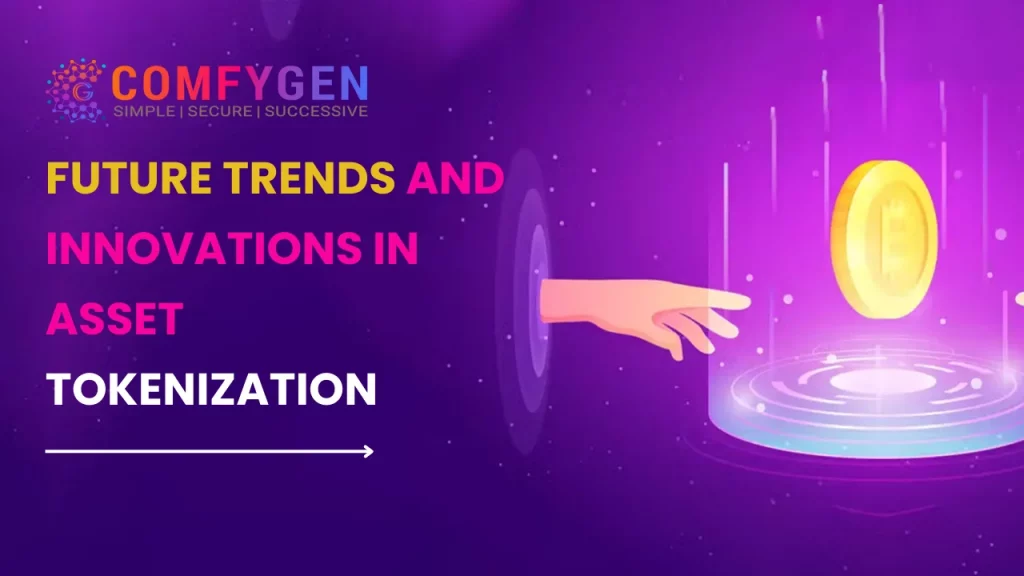
The future of asset tokenization is marked by emerging trends like fractional ownership, tokenizing unconventional assets, and integrating with decentralized finance. Real-time settlement, increased automation, and the blockchain development of specific regulatory frameworks are anticipated. Technological innovations, including interoperability solutions, advancements in consensus mechanisms, and enhanced privacy features, will play a central role in shaping a more efficient, secure, and versatile asset tokenization ecosystem.
Emerging Trends in Real-World Asset Tokenization
The future of asset tokenization holds exciting trends. Fractional ownership, allowing investors to own small portions of high-value assets, is gaining prominence, enhancing market accessibility. Tokenization of unconventional assets like intellectual property, patents, and carbon credits is on the rise, expanding the scope beyond traditional classes. Integration with decentralized finance is a notable trend, merging the benefits of asset token development with decentralized lending, borrowing, and produce farming. Real-time settlement and increased automation in smart contract functionality are expected to streamline processes, reducing transaction times and costs.
Technological Innovations and Advancements
Allowing seamless interaction between different blockchains will enhance the overall ecosystem’s efficiency. Advancements in consensus mechanisms, like the transition to proof-of-stake , will address scalability concerns. Layer-2 solutions, like sidechains and rollups, will contribute to faster and more cost-effective transactions. Enhanced privacy features through zero-knowledge proofs and the integration of artificial intelligence for risk management are poised to further refine the tokenization process. Overall, the convergence of these technological advancements will pave the way for a more strong, secure, and versatile ecosystem in the field of asset tokenization.
Factors to Consider Before Entering the Token Economy
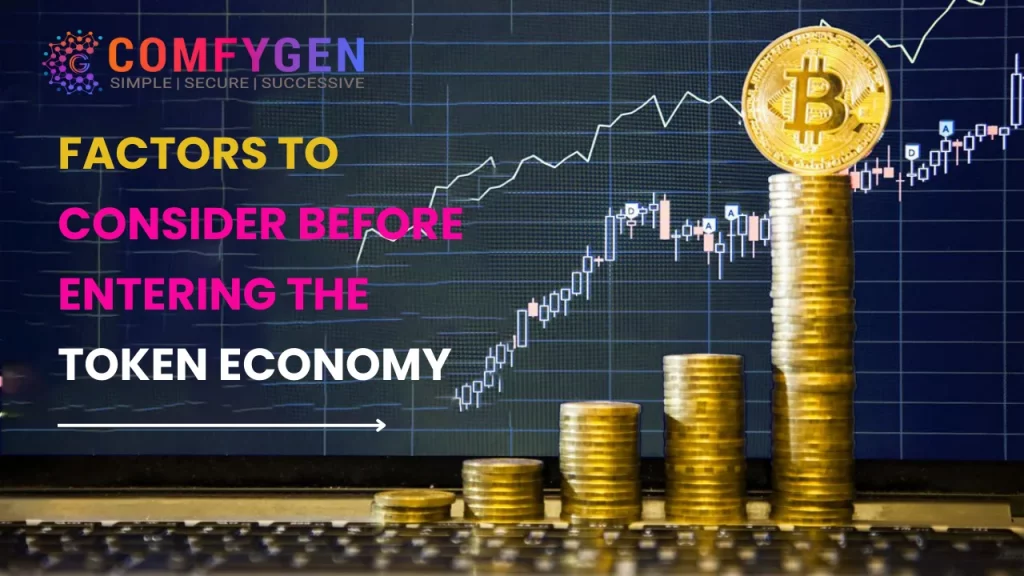
Before entering the token development economy, consider defining a strong business model aligned with tokenomics. Evaluate the seamless token integration into your blockchain platform, ensuring user-friendly interfaces. Prioritize cybersecurity measures to safeguard against threats. Navigating regulatory compliance is important to legal acceptance and user trust, addressing securities laws, AML, and KYC requirements.
-
Business Model
Before entering the token development economy, defining a strong business model is a high priority. Clearly define how tokens will be utilized within your ecosystem, whether as a utility or security and understand the economic incentives for token holders is important. Assessing the viability of the tokenomics ensures alignment with business goals, user engagement, and long-term sustainability. A well-defined business model lays the foundation for successful participation in the token development economy.
-
Platform Integration Process
The seamless integration of tokens into your blockchain platform is a critical consideration. Evaluating the technical aspects, like choosing an appropriate blockchain and token standard, ensures compatibility and functionality. The integration process should align with the overall user experience and blockchain platform objectives. strong technical infrastructure and user-friendly interfaces contribute to a smooth transition into the token economy, fostering user adoption and engagement.
-
Cybersecurity
Cybersecurity is a high-priority factor when participating in the token economy. Token-based systems are attractive targets for cyber threats and attacks. Implementing strong cybersecurity measures, including secure smart contract coding, encryption, and regular audits, is compulsury to safeguard both the blockchian platform and user assets. A proactive approach to cybersecurity instills trust among users and mitigates the risks associated with potential weakness in the token ecosystem.
-
Compliances
Navigating regulatory landscapes is important before entering the token economy. Understanding and accepting relevant local and international regulations ensures legal compliance. This involves addressing issues related to securities laws, anti-money laundering regulations, and Know Your Customer requirements. Collaborating with legal experts to navigate the complex regulatory environment mitigates legal risks and paves the way for a secure and compliant presence in the token development economy.
Conclusion and Key Takeaways
In conclusion, real-world asset tokenization on blockchain development is a transformative era in finance and ownership. This ultimate guide underscores the multifaceted landscape, covering the conceptual foundations, technological intricacies, and practical applications of asset token development. The evolving trends and innovations in this space promise increased accessibility, transparency, and efficiency. However, challenges like security risks and regulatory complexities require vigilant consideration. As blockchain development company embrace fractional ownership, decentralized finance, and diverse tokenized assets, the key takeaways emphasize the need for a strategic business model, seamless blockchain platform integration, strong cybersecurity measures, and unwavering compliance with regulatory frameworks. Successfully navigating these considerations ensures a future where asset tokenization redefines traditional paradigms, unlocking new opportunities for investors and reshaping global financial ecosystems.

Mr. Saddam Husen, (CTO)
Mr. Saddam Husen, CTO at Comfygen, is a renowned Blockchain expert and IT consultant with extensive experience in blockchain development, crypto wallets, DeFi, ICOs, and smart contracts. Passionate about digital transformation, he helps businesses harness blockchain technology’s potential, driving innovation and enhancing IT infrastructure for global success.

